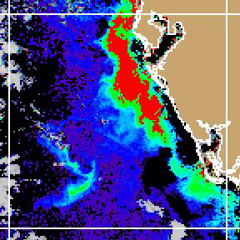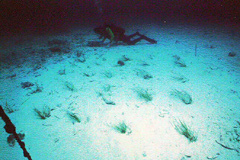
|
|
Ecological forecasts predict the impacts of chemical, biological, and physical changes on ecosystems, ecosystem components, and people. NOAA's National Ocean Service (NOS) has initiated a suite of ecological forecasts to support more effective ecosystem management. Ecological forecasts bring together wide-ranging research and observation programs to allow coastal resource managers to answer the "what if" questions about factors that affect coastal resources. Benefits of Ecological Forecasts Major benefits of ecological forecasts are (1) improving decisions to sustain ecosystem productivity and lessening the impacts from extreme natural events and human activities; (2) bringing scientists and resource managers together to solve resource management problems; and (3) focusing scientific research and monitoring priorities to reduce uncertainties in ecological forecasts.
Examples of ForecastsEcological forecasts vary in time and geographic scale. Depending on the ecosystem and the phenomenon being forecast, responses to ecological variables can take place on short-term or long-term time scales (hours to decades), and on spatial scales from local to regional to global. The current forecasts are: Short-term local: Predicting the presence of sea nettles in the Chesapeake Bay. Short-term local: Predicting the movement and behavior of spilled oil or chemicals and evaluating the risk to resources. Short-term local: Predicting the abundance of pink shrimp in North Carolina in the spring and summer based on cold ocean temperatures during the previous winter. Short-term regional: Predicting the development, persistence, movement and landfall of harmful algal blooms off coastal Florida and in the Gulf of Maine.
Long-term local: Predicting the effectiveness of seagrass restoration efforts in North Carolina coastal waters based on projected wave disturbance and major storms. Long-term regional: Predicting oyster abundance in Florida's Apalachicola Bay based on variable freshwater inflow scenarios. Long-term national: Predicting changes in the size of the Gulf of Mexico dead zone based on nutrient impacts in the Mississippi River and its Midwest tributaries. Long-term regional: Predicting the potential population of cod and haddock on Georges Bank based on predator/prey relationships and environmental variability. Long-term regional: Predicting shellfish bed closures based on freshwater input and large coastal storms.
|
|
||||||||||||||||||||
|
||||||||||||||||||||||
|
Revised July 22, 2004 | Questions, Comments? Contact Us | Report Error On This Page | Disclaimer | User Survey |


